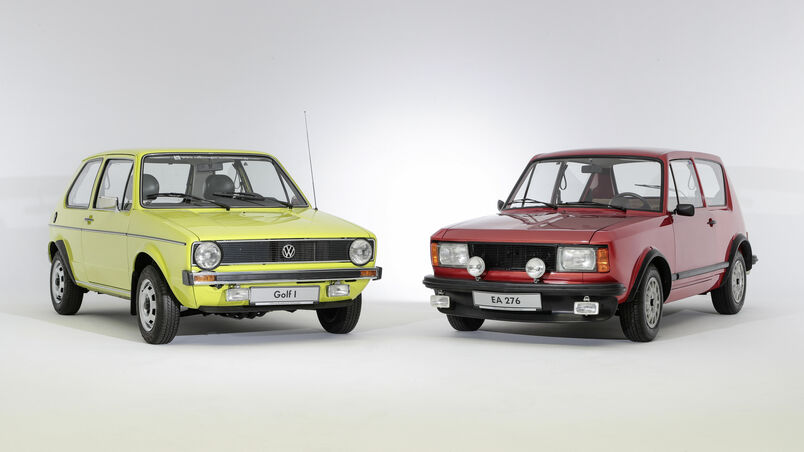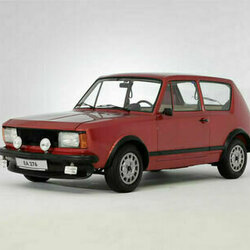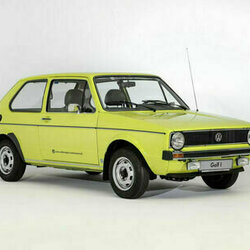
50 years of the Golf: Volkswagen shows a rare duo
The Golf, the icon: the most-built Volkswagen is celebrating its 50th birthday this year. To kick off the anniversary year, the Golf I and one of its predecessors from 1969 can be seen at the Bremen Classic Motorshow (Germany). The Golf has moved and impressed the masses since 1974. And with every generation, the compact car has revolutionised and democratised the automotive world.
It was no longer cooled with air and it was no longer a boxer. A new era started with the first Golf. And the technical change was also accompanied by a change in the visual concept. “The Golf offers maximum usable space and safety. It is uncompromisingly practical,” is how the company described it at the time. And so the year in which Germany won the World Cup in football became the year for the most-built Volkswagen of the future. Just two years later, the first million units had already been sold, and more than 37 million units have now been delivered worldwide.
The Golf would and had to continue its success story. But in 1974, nobody knew that its success would be much greater than that of the Beetle. Over the years, the Golf became almost imperceptibly part of our society, synonymous with a vehicle class and even an entire generation. And everyone has probably had their own personal experience with the Golf: as a driving school car, as an own new or used car, with relatives or friends, with two or four doors, as a petrol or diesel model, GTI or ‘strawberry basket’. Somewhere there always was and still is a Golf.

The heart of the Volkswagen brand
However, when series production of the Golf I started at the Volkswagen plant in Wolfsburg 50 years ago – in March 1974 – this success was far from guaranteed. Because as the successor to the Volkswagen Beetle, it followed in giant footsteps. The Beetle, the icon, had laid the foundation for Volkswagen’s worldwide success. But the new model from Wolfsburg was also very popular and quickly became a bestseller.
In the subsequent model generations, it was always the Golf that made affordable mobility possible for everyone at the highest technical level. It came with technology such as the controlled catalytic converter and efficient drive systems, and additionally offered safety features such as the anti-lock braking system, airbags or the first all-wheel drive system in the product line. The secret of the success is also down to the fact that the designers transferred the first generation’s DNA to its successors, thereby cultivating the classic design.

Development of a new bestseller
Work on a successor to the Volkswagen Beetle had already begun in Wolfsburg in the late 1960s. Several concept vehicles were created, including the EA (development order) 276. The EA 276 from 1969 already exhibited many features of the later successful model such as front engine, hatchback with large boot lid and torsion beam axle. But under the bonnet was still the well-known Beetle boxer engine with air cooling, and the focus was on reliability and low development costs. However, the days of this technology were coming to an end. The design of the EA 276 was pioneering, but another concept vehicle was developed further for series production. The new model was designed by Giorgetto Giugiaro (Italdesign).
Rare exhibition duo at the Bremen Classic Motorshow
To mark the start the anniversary year, the Volkswagen brand is presenting the Golf I in Bremen, thus recalling the beginning of the automotive revolution in 1974. The appearance at the motor show is complemented by the unique EA 276 concept vehicle – the predecessor to the Golf that was developed in Wolfsburg. The bright yellow production Golf and the orange-red concept vehicle can be seen at Stand D10 in Hall 5 from 2 to 4 February.
Volkswagen Classic is present at the show together with the Autostadt Wolfsburg, Volkswagen Commercial Vehicles Oldtimers and Audi Tradition, who will also make it possible for visitors to experience automotive history.
The Bremen Classic Motorshow has been opening the season of classic vehicle shows in Germany for over 20 years. With over 46,000 visitors, it is a firm fixture in the event calendar of classic car enthusiasts.





